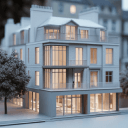3D home modeling software revolutionizes tiny house design by enabling precise space utilization. Software tools, such as Arcadium, SketchUp and AutoCAD, offer features like drag-and-drop interfaces and extensive object libraries. While Sketchup and AutoCAD are not specifically designed for arranging furniture and appliances in confined spaces. Data shows that users of such software can reduce planning time by up to 50% while achieving more efficient use of available space.
Specifically, SketchUp allows users to visualize tiny homes in 3D with an ease of manipulation that traditional 2D drafting tools do not match. AutoCAD, recognized for its precision and professional-grade capabilities, supports complex architectural details critical for tiny houses, such as custom storage solutions and multi-functional areas. These applications support various file formats for seamless integration into professional workflows. For example, SketchUp's.SKP files and AutoCAD's.DWG files facilitate easy sharing and collaboration among design teams.
Traditional 2D drafting tools limit the designer's ability to perceive spatial relationships and volumes, leading to less optimized designs. 3D modeling software provides a comprehensive view of how different elements within a tiny house interact, significantly improving decision-making. Users report higher satisfaction with end designs due to the ability to experiment with different layouts and visualize the final outcome in a realistic manner.
Arcadium emerges as a user-friendly alternative for a designer (professional and non-professional) interested in tiny house projects. Its browser-based platform eliminates the need for complex installations, making it accessible for users with varying levels of technical expertise. Arcadium's emphasis on simplicity and speed allows for the creation of detailed 3D house plans in minutes, offering a practical tool for those looking to explore the potential of their tiny house projects without the steep learning curve of more complex software.
Contents:
Top Benefits of 3D Home Modeling Software in Tiny House Planning
Why consider 3D modeling software for tiny house design? Such software greatly enhances visualization capabilities. Architects and designers can create detailed models, showcasing textures and colors accurately. Clients, in turn, view realistic representations of potential living spaces, enabling informed decisions.
How does this software streamline the design process? By allowing for rapid iterations and modifications. Changes in layout, materials, or furniture arrangements are executed with a few clicks, significantly reducing design time. Errors are detected early, preventing costly mistakes during construction.
Does 3D modeling software contribute to better space utilization? Absolutely. Tiny houses demand efficient use of space, and this software offers tools for precise measurement and planning. Designers optimize the placement of fixtures, appliances, and furniture, ensuring maximum functionality within limited square footage.
3D home modeling software proves more advantageous than traditional drafting methods in tiny house planning. With its ability to visualize complex spatial arrangements, it surpasses pencil and paper sketches that cannot convey depth and detail with the same clarity. Moreover, its facilitation of client involvement through realistic previews eclipses static 2D floor plans, fostering a collaborative design process that traditional techniques struggle to match.
Key Features to Look for in Tiny House Design Software
What capabilities should tiny house design software offer for creating detailed floor plans? Accurate dimensional tools are indispensable. Such tools enable users to draft precise blueprints, ensuring that every square inch is optimized. Users can manipulate walls, windows, and doors, tailoring each element to meet specific spatial constraints.
Does the software allow for realistic 3D visualization? High-quality rendering functionality is crucial. This feature transforms basic sketches into lifelike models, allowing individuals to envision their tiny home before construction begins. Lighting, textures, and materials can be adjusted, providing a comprehensive preview of interior and exterior aesthetics.
Can users easily modify designs and experiment with different layouts? Flexibility in design alteration stands paramount. With intuitive drag-and-drop interfaces, users can swiftly reconfigure layouts, exploring various configurations without starting from scratch. This adaptability encourages creativity and experimentation, leading to more refined and personalized tiny house designs.
Superior 3D home modeling software outshines basic drawing tools in several aspects. It furnishes users with precise control over dimensions, whereas rudimentary programs offer limited accuracy. The ability to render in 3D surpasses flat sketches by providing immersive visual experiences. The adaptability of design with high-end software eclipses the static nature of simpler applications, fostering a more innovative and customized design process.
Which 3D home modeling software offers the most user-friendly interface for beginners? Several platforms stand out for their intuitive design and easy navigation. Programs like these often feature drag-and-drop functionalities and extensive tutorials. Such features ensure that novices can start their tiny house projects without a steep learning curve, making the design process accessible and enjoyable.
How do the costs of these platforms vary? The price range among popular 3D modeling software can be significant, with some offering free versions while others require a subscription. Free versions usually provide basic tools sufficient for simple designs, whereas paid subscriptions offer advanced features like custom textures and increased rendering capabilities. Budget-conscious enthusiasts may prefer the free versions, but those seeking more sophisticated designs might find the investment in a subscription worthwhile.
What level of detail do different software options allow for in tiny house designs? Detail levels greatly differ across platforms, with some enabling the user to customize every aspect of the house, from the thickness of the walls to the type of roofing materials. Others might focus more on the broader strokes of design, offering less granularity but simpler overall planning. Designers with a keen eye for detail and specific requirements for their tiny houses will gravitate towards software with comprehensive customization options.
In terms of features for tiny house enthusiasts, some platforms outshine others in specific areas. For customization and detail, certain software clearly leads, allowing users to delve into intricate design elements. Conversely, for those prioritizing ease of use and cost, other platforms emerge as superior choices, offering straightforward interfaces and free to low-cost access. This balance ensures that, regardless of individual priorities and skill levels, there exists a suitable 3D home modeling tool for every tiny house designer.
Maximizing Small Spaces: Techniques and Tips
How can one make a tiny house feel spacious using 3D home modeling software? Utilizing vertical spaces effectively increases available floor area. Loft beds, overhead storage, and tall shelving units serve as examples, demonstrating efficient use of upward areas for both sleeping and storage, thus freeing up the ground space for other activities.
What role does multifunctional furniture play in maximizing small spaces? It significantly enhances the utility of each square foot. Tables that transform into desks or sofas that double as guest beds exemplify how dual-purpose items reduce the need for separate pieces. This strategy ensures that each furniture piece serves multiple functions, thereby optimizing the living space.
Is there a technique to use colors and light to expand the perceived size of a space? Yes, employing lighter hues and strategic lighting can make rooms appear larger. Light colors like pastels and neutrals reflect light better than dark shades, which absorb light. Incorporating ample natural and artificial light sources, such as skylights and LED strips, brightens the space, giving an illusion of expansiveness.
In terms of maximizing small spaces, integrating built-in storage solutions offers a more seamless and spacious environment than freestanding storage units. Built-ins, designed to blend with the walls or under unused spaces like stairs, provide storage without consuming valuable floor space. Mirrors, when positioned to reflect light and outdoor views, create a sense of depth and openness that surpasses the effect of plain walls, making the area not only appear larger but also more connected with the exterior.
Cost Analysis: Investing in Professional versus Free Software
Is the initial financial outlay for professional 3D home modeling software justified? Absolutely. Architects and designers find these tools indispensable for crafting detailed tiny house models. They support intricate design work, enable accurate shadow analysis, and facilitate thermal performance assessment. In contrast, hobbyists may hesitate at the cost, yet the investment enhances project feasibility studies and elevates design precision.
What do free 3D modeling tools offer to users? These software options provide a foundation for understanding basic design principles. Users can experiment with layout variations, explore different materials, and visualize spatial configurations without financial commitment. However, they lack advanced features such as realistic lighting simulations, comprehensive material libraries, and technical support services, which are critical for professional-grade projects.
Can the cost of professional software be offset by its benefits? Indisputably. The efficiency gained through the use of professional tools leads to faster project completion, which translates to cost savings in terms of labor. The ability to detect design flaws early in the process reduces the risk of expensive alterations during construction. Thus, while the upfront cost is higher, the long-term savings and quality enhancements are significant.
Professionally developed 3D modeling software boasts advanced functionality over its free counterparts, streamlining the design process for tiny houses. Users witness a decrease in design errors, thanks to the precision and depth of tools available. Moreover, the long-term cost benefits, stemming from reduced labor and fewer design modifications, outweigh the initial investment, making professional software a prudent choice for those committed to excellence in tiny house design.
Are user-friendly design tools for beginners available in 3D home modeling software? Absolutely. These tools often feature intuitive drag-and-drop interfaces, which lower the learning curve significantly. Beginners find navigating through various design options, such as walls, windows, and furniture pieces, straightforward. The software provides instant visual feedback, helping users quickly understand the impact of their design choices.
Do these tools support customization? Yes, they do. Users can select from a vast library of textures, colors, and materials to personalize every aspect of their tiny house. The customization options extend to structural elements, allowing for the alteration of floor plans, roof styles, and exterior finishes. This flexibility ensures that even novices can tailor their designs to match their specific preferences and needs.
How do these software tools assist in optimizing space? They come equipped with features that make efficient use of available space a priority. For example, users can experiment with multi-functional furniture pieces and built-in storage solutions. Such features are indispensable for tiny house designs, where maximizing every square inch is crucial. The software also enables users to simulate different lighting conditions, ensuring that the tiny house feels spacious and welcoming.
In terms of accessibility, these user-friendly design tools offer a steeper learning curve and faster proficiency achievement than more complex architectural software. Beginners can produce viable and intricate designs with minimal prior experience, unlike with professional-grade programs that require extensive training and familiarity with design principles. Consequently, for individuals embarking on their first tiny house project, these user-friendly options significantly demystify the design process, allowing for a more enjoyable and less intimidating experience.
Integrating Sustainability into Your Tiny House Design
How can 3D home modeling software enhance the sustainability of tiny house designs? By allowing designers to simulate various environmental impacts, such software aids in creating structures that are more in harmony with nature. Users can test different materials to find those with the lowest carbon footprint, optimize the layout for maximum solar gain, and ensure efficient water usage. These tools make it simpler to incorporate renewable energy sources, like solar panels and wind turbines, into tiny house projects.
What role does sustainability play in selecting materials through 3D modeling software? The software evaluates the lifecycle of building materials, from extraction to disposal. It favors materials like bamboo, cork, and recycled steel, which have minimal adverse effects on the earth. Moreover, the software can discourage the use of concrete and plastic, which are energy-intensive to produce and harmful to the ecosystem. By prioritizing green materials, designers can significantly reduce a tiny house's environmental footprint.
Does integrating sustainability into your tiny house design affect overall costs? Initially, investing in sustainable technologies and materials might seem more expensive. However, the long-term savings on energy bills, water usage, and maintenance can offset the initial outlay. The software helps forecast these expenses and savings, providing a comprehensive understanding of the financial impact of sustainable choices. This approach ensures that tiny houses are not only environmentally friendly but also economically viable.
Tiny houses designed with sustainability in mind typically consume less energy than traditional homes, owing to their reduced size and efficient use of space. These structures often incorporate natural light more effectively, reducing the need for artificial lighting. Water-saving fixtures and rainwater harvesting systems are more common in sustainable tiny house designs, leading to lower water consumption. As a result, the environmental impact of living in a tiny house designed with sustainability in focus is significantly lower than residing in a conventional home, demonstrating how small-scale living can contribute positively to addressing large-scale environmental challenges.
Case Studies: Successful Tiny House Projects Using 3D Modeling
Can success stories in tiny house projects inspire potential adopters of 3D modeling software? Undoubtedly, numerous examples demonstrate the software's capability to turn vision into reality. Architects employed these tools to meticulously craft designs that optimize space, ensure structural integrity, and embody the homeowner’s aesthetic. These tools allowed for adjustments before physical construction began, preventing costly errors and promoting efficiency.
How have real-world applications of 3D home modeling software influenced the outcome of tiny house projects? Significantly, case studies reveal that the use of this software facilitates a smoother design process, especially in the tiny house sector where every inch matters. Designers have leveraged the software to experiment with innovative storage solutions, foldable furniture, and multi-functional spaces, all of which are crucial in maximizing the utility of limited square footage. These projects not only met the unique needs of their inhabitants but also adhered to sustainability practices.
What role does 3D modeling play in client-designer communication in tiny house projects? A pivotal one, as these tools bridge the gap between complex architectural concepts and clients' understanding. Through realistic renderings and virtual walkthroughs, clients can visualize the end product, express their preferences, and request changes with clarity. This interaction enhances the final design and ensures that the tiny houses reflect the personal taste and lifestyle of their residents, making each project a customized masterpiece.
In terms of impact, projects utilizing 3D modeling showcase a higher success rate in meeting client expectations and project specifications than those relying on traditional 2D blueprints. These case studies highlight the software’s precision in detailing and space utilization, qualities particularly beneficial in tiny house designs where precision is paramount. The ability to simulate environmental factors and lighting conditions helps in optimizing the location and orientation of windows and solar panels, enhancing the living experience and energy efficiency of tiny houses.


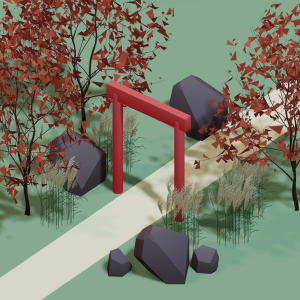 All training, tips and articles
All training, tips and articles
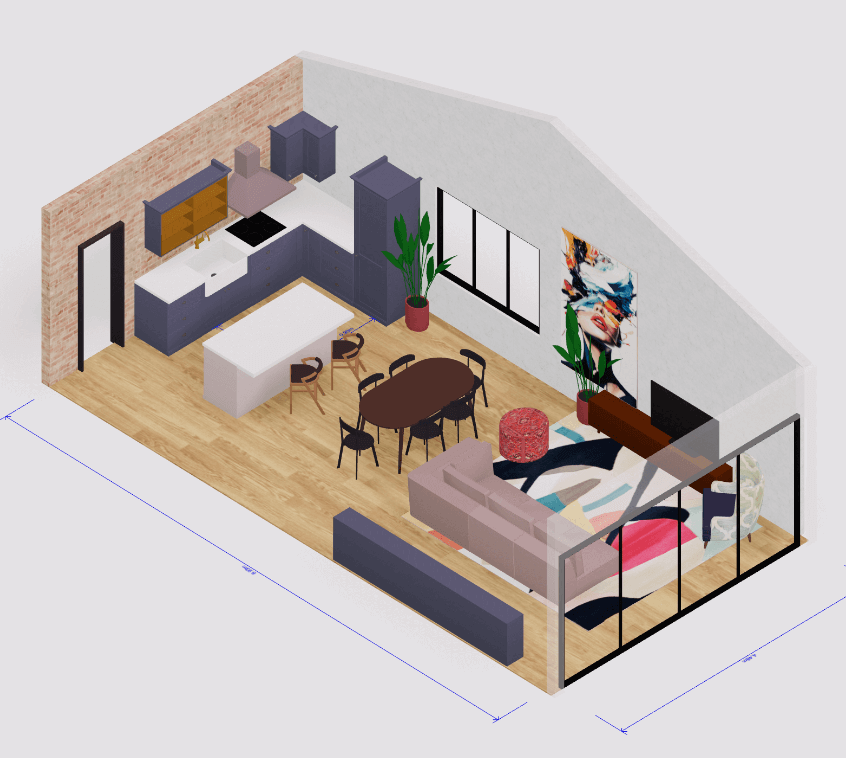 3D house design tool
3D house design tool
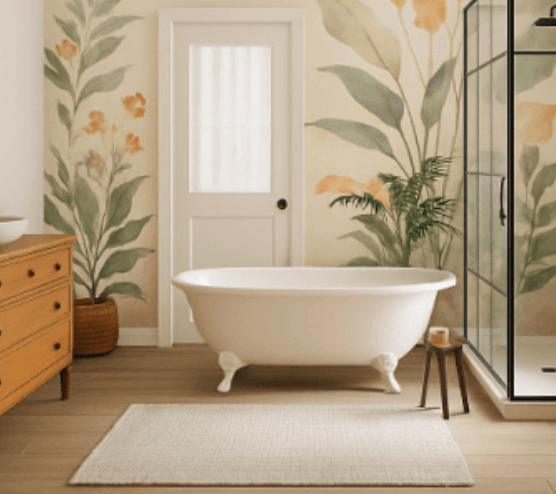
 Color palette generator
Color palette generator
 Floor plan creator
Floor plan creator
 Interior design app
Interior design app
 Kitchen design tool
Kitchen design tool
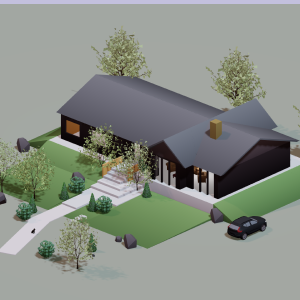 House design software
House design software
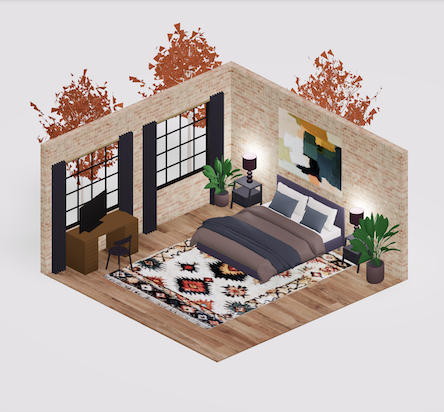 Room designer
Room designer
 Landscape design software
Landscape design software
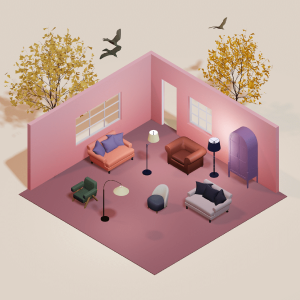 Bedroom design
Bedroom design
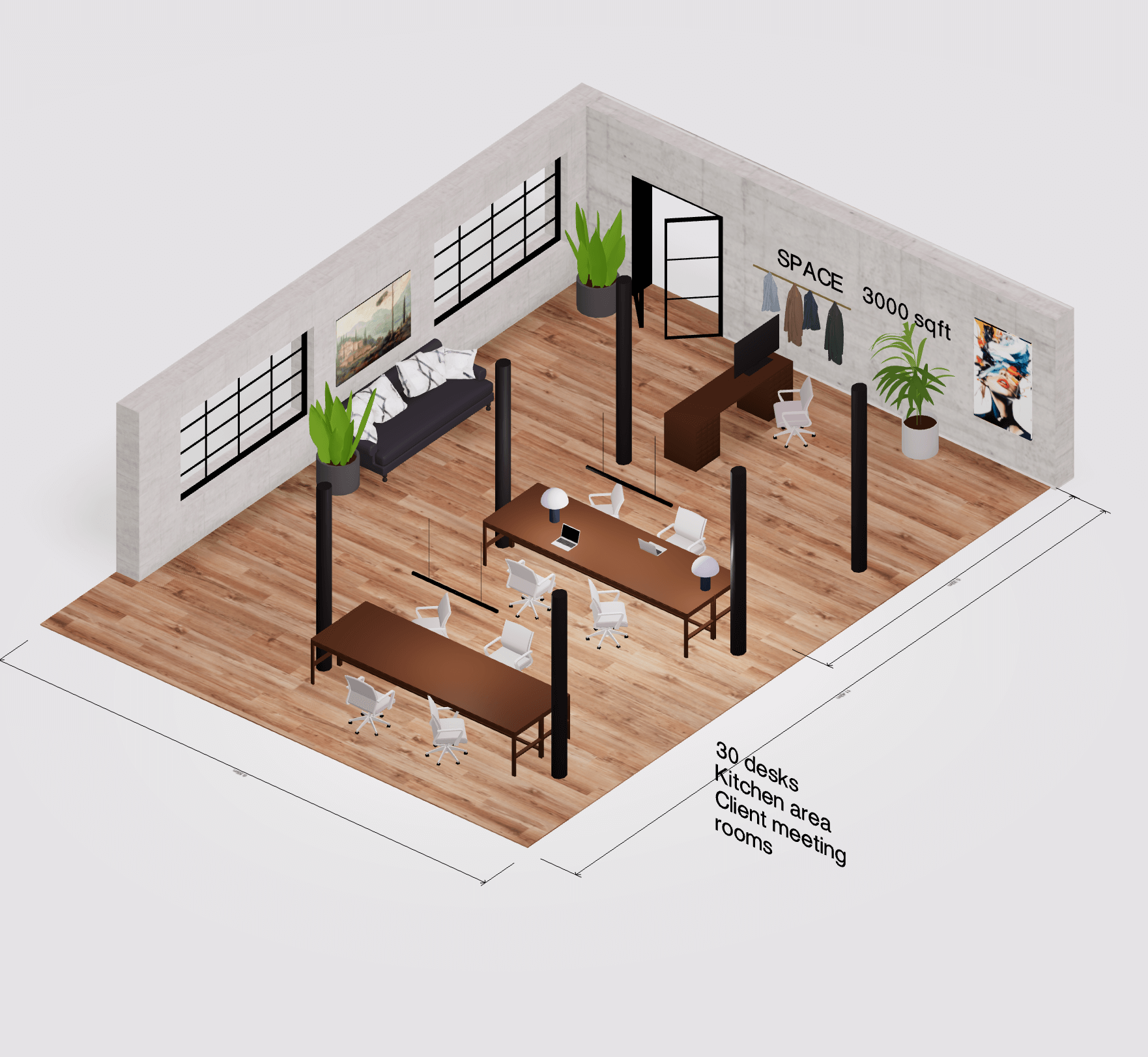 Office floor plan creator
Office floor plan creator
.png)



